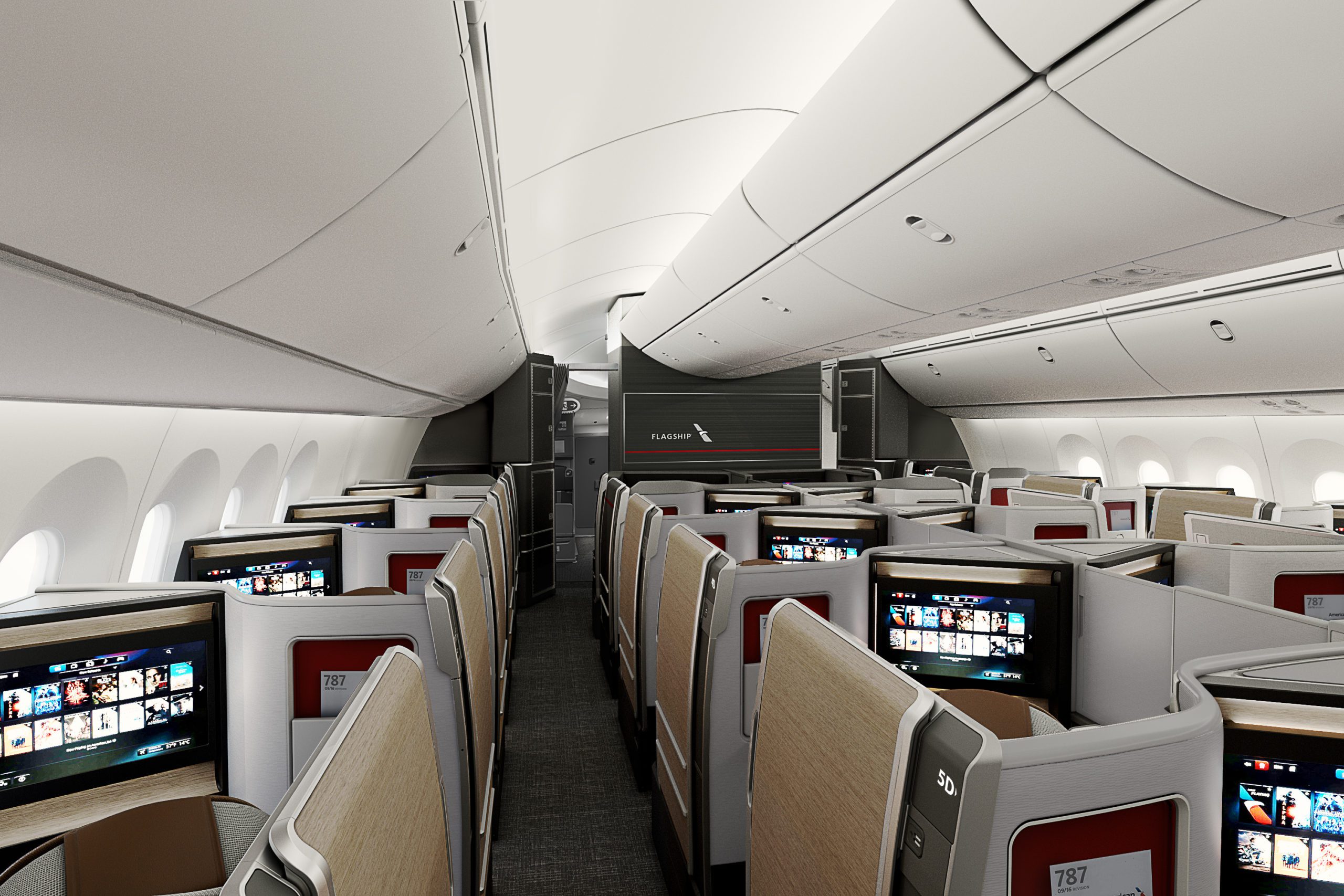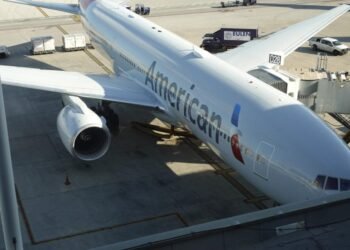Enilria identifies two cities that have the greatest potential for American Airlines to serve (subscription). The first is Duluth, Minnesota, which they dropped during the pandemic. They should be flying a 50 seat regional jet there from Chicago, but have continually retrenched in Chicago ceding the city to United so that seems unlikely.
The second one is more interesting: Bangkok. No airline flies there non-stop from the United States. It’s surprising that United doesn’t. With all of the widebodies they have coming, surely they’ll have to. Already United serves Manila and Singapore. (Thai Airways used to serve LA and New York non-stop but no longer do.)
Street Food In Bangkok
American Airlines Doesn’t Want To Grow Low Haul
When American Airlines placed a new order for Boeing 787s in 2018,
- The 787-8s were described as a replacement for Boeing 767s. The 767s have been retired.
- The 787-9s were described as a replacement for Airbus A330-300s (which have been retired, along with A330-200s) and for older Boeing 777-200s.
However American has actually deferred delivery of 10 Boeing 787-9s into 2028 or later. They don’t want those planes any time soon.
They Limit Long Distance Flying To South America, Summer Europe And Partner Hubs
American Airlines is not a long haul airline, and they are not a Pacific airline.
- They are a domestic hub and spoke carrier, connecting passengers to and from small cities across the Sun Belt as well as to Mexico, Caribbean, and Central America.
- They are an airline to Deep South America, for seasonal Europe, and to joint venture airline partner hubs.
The airline’s strong preference is for narrowbody aircraft. Widebodies are expensive to operate, and long haul flights need revenue premiums to succeed. The best long haul markets are often well saturated, and by airlines that (1) offer a better inflight product, and (2) feel the need to serve the United States even when a flight isn’t earning a good return on capital.
Will American Return To Hong Kong?
When American does take delivery of Boeing 787-9, they’ll be business class-heavy (unless they alter the configuration of these aircraft). With fewer passengers they’ll likely be less weight-restricted and can fly longer distances. But they’ll also need to be premium routes where yield potential is high.

New Business Class, credit: American Airlines
Service to Hong Kong was dropped at the start of the pandemic – initially suspended, the decision to drop Los Angeles – Hong Kong was made permanent first (that flight performed especially badly) and then a retreat from the destination entirely with the elimination of Dallas – Hong Kong.
American Airlines first started serving Hong Kong from Dallas. This flight did well, and reportedly sold even in first class. However, Dallas service involved overnighting the plane in Hong Kong. It was an inefficient use of aircraft. Adding LA only required a single additional aircraft.
Connections beyond Hong Kong are great for reaching Southeast Asia, considering that American’s primary Asian partner Japan Airlines has only a limited network beyond Tokyo with often just single daily flights to many destinations and long layovers. As Cathay Pacific continues to restore service, they could be a good partner, but a joint venture isn’t in the cards due to lack of an Open Skies treaty.
American has pulled down international flying from its Los Angeles hub. They operate only to joint venture partner hubs (JAL/Tokyo, British Airways/London, Qantas/Sydney). Cathay serves LA-Hong Kong already and is incentivized to connect passengers off of its own flights. But Dallas – Hong Kong could make sense again.
Cathay Pacific hasn’t returned to Seattle – Hong Kong, and American has talked about building Seattle as an Asia gateway in conjunction with Alaska Airlines, but hasn’t done so. They’ve pulled down even Seattle – London flying. If they ever decided to launch a West Coast international gateway again this could be a second flight, operated efficiently.

Victoria Harbour, Hong Kong
Will American Airlines Fly To Singapaore?
Singapore benefits from Hong Kong’s decline, and is a good destination. United Airlines serves it already.
Los Angeles – Singapore is served by Singapore Airlines, with both a daily flight and a second flight three times weekly. Singapore also currently flies Seattle – Singapore three times weekly, and partners with Alaska Airlines. Presumably that partnership wouldn’t survive if American started operating Seattle – Singapore.

Hawker Stalls, Singapore
Other Asian Destinations Seem Less Likely
American operates Dallas – Seoul. Los Angeles – Seoul and Seattle – Seoul are too competitive, especially considering that Delta/Korean and Asiana offer connections beyond Seoul while American does not.
Kuala Lumpur, speculated in the past, isn’t as strong a premium destination as Hong Kong or Singapore. And while American has a oneworld (but not otherwise close) partner in Malaysia Airlines, that carrier is relatively weak. Serving West Coast – Kuala Lumpur just to connect passengers into Southeast Asia would be low yielding.

Petronas Towers, Kuala Lumpur
American owns a stake in China Southern, but that partnership has failed to blossom. American has also lost tens of millions, if not hundreds of millions, flying to China. As permissible flights to China grow, Dallas – Beijing seems more likely than a West Coast addition (even more than much-discussed Seattle – Shanghai) and Guangzhou where China Southern is based seems unlikely.
They codeshare with Philippine Airlines so I’m sure there’s been consideration of flying to Manila. Philippine Airlines serves Los Angeles – Manila twice daily. Yet it’s mostly low yielding market. United Airlines has entered the Manila market (something they wanted for awhile). Dallas – Manila would almost certainly underperform.
I’m personally rooting for Dallas – Istanbul, though this route is served daily by Turkish Airlines which offers a wide array of beyond Istanbul connections. American would scoop up the limited traffic from small cities in the Midwest to Istanbul that aren’t connecting from United onto Turkish through Houston.
I’d also love to see the fruition of once-planned Casablanca service, connecting with oneworld carrier Royal Air Maroc. They’d planned to serve this route with a (now retired) Boeing 757 from Philadelphia but could use a Boeing 787 from Dallas. That’s a bigger, more expensive commitment than what they’d planned for their first foray into Africa.
If They Don’t Cancel Or Swap 787s On Order, They’ll Eventually Need To Fly Somewhere
American could cancel their Boeing 787-9s, especially as part of a new order for narrowbody aircraft. But assuming they take those planes, and they don’t merely accelerate retirements of Boeing 777s, then the new aircraft will need to go somewhere other than Cancun.
This is a real challenge for an airline that is very strong domestically, but the weakest of the major U.S. airlines internationally.





